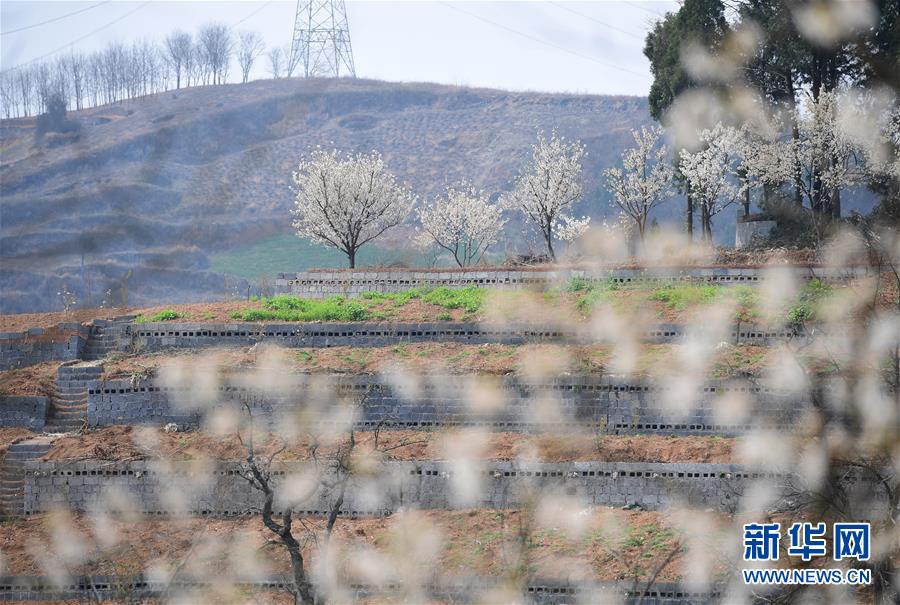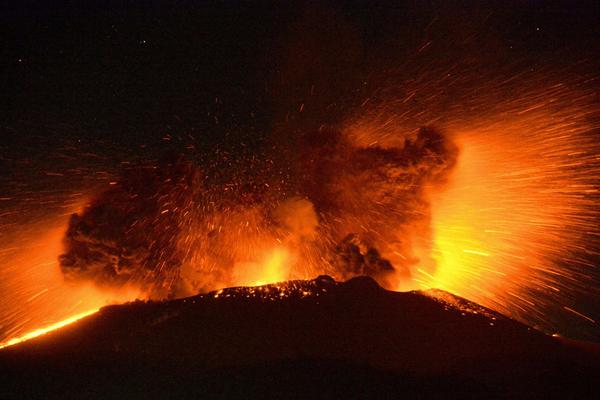
1. The hierarchical structure of the computer system is high-level language machine level, assembly language machine level, traditional machine language machine level, and microprogram machine level in order from high to low. The computer system is hierarchical, and it is composed of a multi-level hierarchical structure.
2. The hierarchy of the computer system includes: hardware layer, operating system layer, system program layer, and application layer. The hardware layer provides basic computable resources, including processors, registers, memory, and various I/O facilities and devices, which are the basis for the work of operating systems and upper-level software.
3. The hierarchical structure of the computer system includes: hardware layer, operating system layer, system program layer, and application layer. The hardware layer provides basic computability resources, including processor,Memory, memory, and various I/O facilities and equipment are the basis for the work of operating systems and upper-level software.
4. Computer software systems can usually be divided into the following levels: application software layer: application software layer is software directly used by users, including various office software, games, browsers, audio and video software, etc. The hierarchy of computer systems includes: hardware layer, operating system layer, system program layer and application layer.

The structure of ecosystems includes biome, biodiversity, species composition, food chain and network, environmental factors, etc. Specifically, the structure of ecosystems involves the interaction between different species and their relationship with abiotic factors.
The structure of the ecosystem refers to the relatively orderly and stable state of various components of the ecosystem in space and time. It includes the content of morphology and nutritional relationships.
The structure of the ecosystem includes the following aspects: the composition of the ecosystem: the ecosystem is composed of biological parts and non-biological parts.The biological part includes plants, animals and microorganisms, etc., which play the role of producers, consumers and decomposers in the ecosystem.
Ecosystem structure refers to the relatively orderly and stable state of various components of the ecosystem in space and time. An ecosystem is an orderly structured system formed by the combination of biological and non-living interactions.
The structure of the ecosystem includes biome, biological population, ecological niche, ecosystem, ecological process, food chain, food network, ecological balance, ecosystem health, and ecosystem service functions. The relevant knowledge is as follows: Biome: refers to a part of an ecosystem composed of interacting biological populations in a specific geographical location.
1, the structure of the information system can be divided into the following: infrastructure layer: composed of hardware, system software and network that support the operation of the computer information system.
2. It is generally divided into four levels: infrastructure layer, resource management, business logic layer and application performance layer. Information system is a human-machine integrated system composed of computer hardware, network and communication equipment, computer software, information resources, information users and rules and regulations for the purpose of processing information flow.
3. The three-layer structure is: data access layer: it mainly depends on whether your data layer contains logical processing. In fact, its functions mainly complete the operation of each data file. Don't worry about other operations. Located in the outermost layer (top layer), it is the closest to the user.
4. The structure of the management information system can be divided into three categories according to the management level: high-level, middle-level and grass-roots level.
5. [Answer]: There are four basic components of the management information system: information source, information processor, information user and information manager. The source of information refers to the place where the original data is generated. According to the origin of the original data, the information source can be divided into internal information source and external information source.
6. Information system is a human-machine integrated system composed of computer hardware, network and communication equipment, computer software, information resources, information users and rules and regulations for the purpose of processing information flow. There are five basic functions, namely input, storage, processing, output and control of information.
The hierarchical structure of the computer system is high-level language machine level, assembly language machine level, traditional machine language machine level and microprogram machine level in order from high to low. The computer system is hierarchical, and it is composed of a multi-level hierarchical structure.
Operating system level --- Level 3 Judging from the basic functions of the operating system, on the one hand, it directly manages the software and hardware resources in traditional machines, and on the other hand, it is an extension of traditional machines. Assembly language level --- Level 4 The programming tool of this level is an assembly language instruction set.
The hierarchy of computer systems includes: hardware layer, operating system layer, system program layer, and application layer. The hardware layer provides basic computable resources, including processors, registers, memory, and various I/O facilities and devices, which are the basis for the work of operating systems and upper-level software.
The hierarchical structure of the computer can be divided into five layers: hardware layer, microprogram layer, instruction set architecture layer, operating system layer and application layer. The hardware layer of the computer includes various hardware devices, such as the central processing unit (CPU), memory, hard disk, monitor, etc.
Computer system hierarchy refers to the computer system composed of two major parts, hardware and software. According to the functional subdivision, it can be divided into 7 layers. The computer system is divided into multi-level hierarchical structure according to functions, which is conducive to the correct understanding of the working process of the computer system and clarifying the software and hardware in the computer. The status and role in the system.
Binance exchange-APP, download it now, new users will receive a novice gift pack.
1. The hierarchical structure of the computer system is high-level language machine level, assembly language machine level, traditional machine language machine level, and microprogram machine level in order from high to low. The computer system is hierarchical, and it is composed of a multi-level hierarchical structure.
2. The hierarchy of the computer system includes: hardware layer, operating system layer, system program layer, and application layer. The hardware layer provides basic computable resources, including processors, registers, memory, and various I/O facilities and devices, which are the basis for the work of operating systems and upper-level software.
3. The hierarchical structure of the computer system includes: hardware layer, operating system layer, system program layer, and application layer. The hardware layer provides basic computability resources, including processor,Memory, memory, and various I/O facilities and equipment are the basis for the work of operating systems and upper-level software.
4. Computer software systems can usually be divided into the following levels: application software layer: application software layer is software directly used by users, including various office software, games, browsers, audio and video software, etc. The hierarchy of computer systems includes: hardware layer, operating system layer, system program layer and application layer.

The structure of ecosystems includes biome, biodiversity, species composition, food chain and network, environmental factors, etc. Specifically, the structure of ecosystems involves the interaction between different species and their relationship with abiotic factors.
The structure of the ecosystem refers to the relatively orderly and stable state of various components of the ecosystem in space and time. It includes the content of morphology and nutritional relationships.
The structure of the ecosystem includes the following aspects: the composition of the ecosystem: the ecosystem is composed of biological parts and non-biological parts.The biological part includes plants, animals and microorganisms, etc., which play the role of producers, consumers and decomposers in the ecosystem.
Ecosystem structure refers to the relatively orderly and stable state of various components of the ecosystem in space and time. An ecosystem is an orderly structured system formed by the combination of biological and non-living interactions.
The structure of the ecosystem includes biome, biological population, ecological niche, ecosystem, ecological process, food chain, food network, ecological balance, ecosystem health, and ecosystem service functions. The relevant knowledge is as follows: Biome: refers to a part of an ecosystem composed of interacting biological populations in a specific geographical location.
1, the structure of the information system can be divided into the following: infrastructure layer: composed of hardware, system software and network that support the operation of the computer information system.
2. It is generally divided into four levels: infrastructure layer, resource management, business logic layer and application performance layer. Information system is a human-machine integrated system composed of computer hardware, network and communication equipment, computer software, information resources, information users and rules and regulations for the purpose of processing information flow.
3. The three-layer structure is: data access layer: it mainly depends on whether your data layer contains logical processing. In fact, its functions mainly complete the operation of each data file. Don't worry about other operations. Located in the outermost layer (top layer), it is the closest to the user.
4. The structure of the management information system can be divided into three categories according to the management level: high-level, middle-level and grass-roots level.
5. [Answer]: There are four basic components of the management information system: information source, information processor, information user and information manager. The source of information refers to the place where the original data is generated. According to the origin of the original data, the information source can be divided into internal information source and external information source.
6. Information system is a human-machine integrated system composed of computer hardware, network and communication equipment, computer software, information resources, information users and rules and regulations for the purpose of processing information flow. There are five basic functions, namely input, storage, processing, output and control of information.
The hierarchical structure of the computer system is high-level language machine level, assembly language machine level, traditional machine language machine level and microprogram machine level in order from high to low. The computer system is hierarchical, and it is composed of a multi-level hierarchical structure.
Operating system level --- Level 3 Judging from the basic functions of the operating system, on the one hand, it directly manages the software and hardware resources in traditional machines, and on the other hand, it is an extension of traditional machines. Assembly language level --- Level 4 The programming tool of this level is an assembly language instruction set.
The hierarchy of computer systems includes: hardware layer, operating system layer, system program layer, and application layer. The hardware layer provides basic computable resources, including processors, registers, memory, and various I/O facilities and devices, which are the basis for the work of operating systems and upper-level software.
The hierarchical structure of the computer can be divided into five layers: hardware layer, microprogram layer, instruction set architecture layer, operating system layer and application layer. The hardware layer of the computer includes various hardware devices, such as the central processing unit (CPU), memory, hard disk, monitor, etc.
Computer system hierarchy refers to the computer system composed of two major parts, hardware and software. According to the functional subdivision, it can be divided into 7 layers. The computer system is divided into multi-level hierarchical structure according to functions, which is conducive to the correct understanding of the working process of the computer system and clarifying the software and hardware in the computer. The status and role in the system.
OKX Wallet app download for Android
author: 2025-01-23 02:07 Binance login
Binance login
468.48MB
Check okx.com login
okx.com login
522.24MB
Check Binance app download Play Store
Binance app download Play Store
322.39MB
Check Binance wikipedia
Binance wikipedia
692.51MB
Check Binance app
Binance app
354.79MB
Check OKX Wallet login
OKX Wallet login
985.84MB
Check Binance login
Binance login
173.94MB
Check Binance US
Binance US
151.15MB
Check Binance download APK
Binance download APK
954.84MB
Check OKX Wallet apk download latest version
OKX Wallet apk download latest version
288.63MB
Check OKX Wallet download
OKX Wallet download
248.25MB
Check Binance APK
Binance APK
649.38MB
Check Okx app download
Okx app download
271.87MB
Check Binance app download Play Store
Binance app download Play Store
157.15MB
Check OKX Wallet apk download latest version
OKX Wallet apk download latest version
938.83MB
Check OKX Wallet apk download
OKX Wallet apk download
652.34MB
Check Binance app
Binance app
546.57MB
Check Binance app download Play Store
Binance app download Play Store
663.83MB
Check Binance app download Play Store
Binance app download Play Store
119.11MB
Check OKX Wallet apk download
OKX Wallet apk download
114.34MB
Check OKX Wallet apk download
OKX Wallet apk download
758.37MB
Check Binance US
Binance US
685.47MB
Check okx.com login
okx.com login
559.76MB
Check Binance US
Binance US
581.24MB
Check Okx app download
Okx app download
525.56MB
Check OKX Wallet login
OKX Wallet login
241.57MB
Check OKX Wallet download
OKX Wallet download
343.14MB
Check Binance login
Binance login
333.55MB
Check OKX Wallet apk download latest version
OKX Wallet apk download latest version
123.74MB
Check OKX Wallet app
OKX Wallet app
648.42MB
Check Binance wallet
Binance wallet
882.23MB
Check Binance download Android
Binance download Android
227.62MB
Check Binance login App
Binance login App
891.58MB
Check OKX Wallet app download for Android
OKX Wallet app download for Android
796.75MB
Check Binance login
Binance login
453.19MB
Check Binance app
Binance app
992.15MB
Check
Scan to install
Binance exchange to discover more
Netizen comments More
1645 鱼水相欢网
2025-01-23 02:59 recommend
2323 功成名就网
2025-01-23 02:42 recommend
2309 虚晃一枪网
2025-01-23 02:41 recommend
2516 国之干城网
2025-01-23 02:03 recommend
2472 柳絮才高网
2025-01-23 02:01 recommend